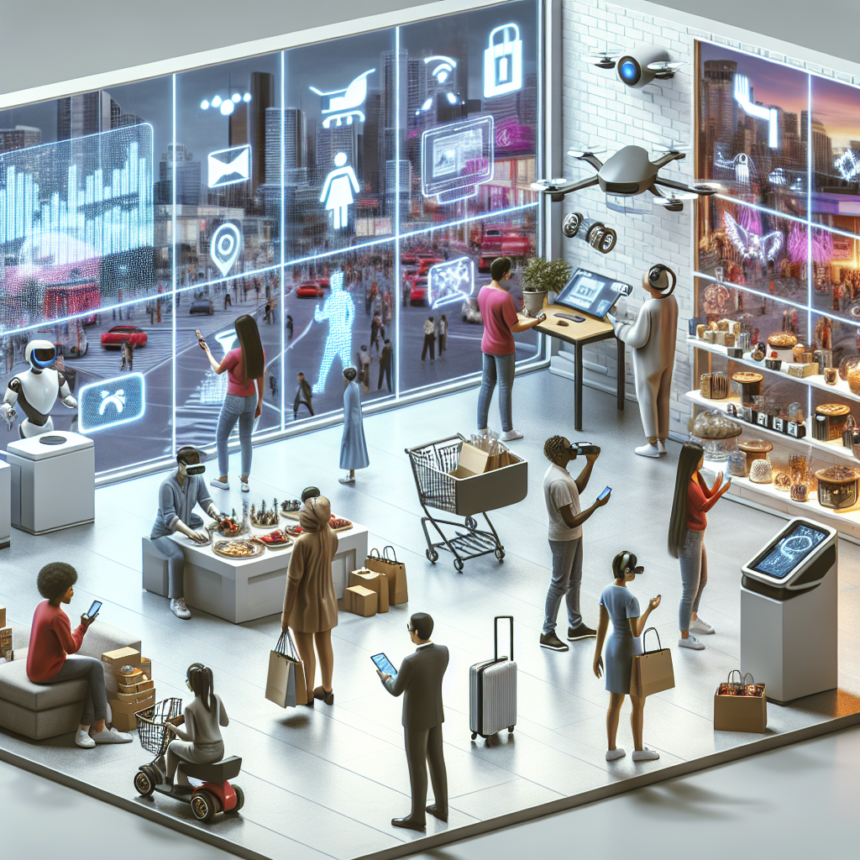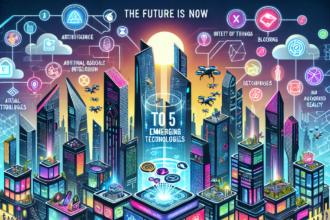In recent years, the retail landscape has undergone a seismic shift, driven primarily by technological advancements that are redefining the way consumers shop. With the rise of e-commerce, the proliferation of mobile devices, and the advent of artificial intelligence and augmented reality, the future of retail is poised for unprecedented transformations. This article delves into the various ways technology is shaping the shopping experience and what it means for consumers and retailers alike.
The Rise of E-Commerce
E-commerce has revolutionized how consumers approach shopping. Instead of being confined to physical store hours and locations, shoppers can now browse and purchase products from the comfort of their homes, any time of day. The convenience of online shopping has forced brick-and-mortar retailers to adapt or risk obsolescence.
Moreover, e-commerce platforms have become increasingly sophisticated, providing personalized shopping experiences through the use of data analytics and customer insights. Retailers can segment their customers, tailor their marketing efforts, and display product recommendations based on previous purchases or browsing behavior. This level of personalization not only enhances the shopping experience but also cultivates brand loyalty.
Mobile Shopping Dominance
With the global surge in smartphone usage, mobile shopping has become a pivotal component of the retail experience. Retailers are increasingly optimizing their websites and apps for mobile devices, allowing customers to shop seamlessly via their smartphones or tablets. Features like one-click payment options and mobile wallets streamline the checkout process, making it faster and easier than ever.
Moreover, mobile apps enhance engagement through features like augmented reality (AR). For instance, brands like IKEA and Sephora are utilizing AR to allow customers to visualize products in their own space before making a purchase. This not only enriches the shopping experience but also reduces return rates, as customers make more informed decisions.
The Advent of Artificial Intelligence
Artificial Intelligence (AI) plays a crucial role in the retail sector by enhancing operational efficiency and improving the customer experience. AI algorithms can predict shopping trends, optimize inventory management, and enhance supply chain logistics. This leads to better stock replenishment and ultimately ensures that customers find the products they want when they want them.
AI-powered chatbots are also revolutionizing customer service. By providing real-time assistance and answering frequently asked questions, these chatbots improve consumer interaction and satisfaction. They can guide customers through the purchasing process, resolve issues, and even recommend products based on individual preferences.
Embracing Augmented Reality and Virtual Reality
Augmented Reality (AR) and Virtual Reality (VR) are taking the shopping experience to a whole new level. With the ability to create immersive experiences, retailers are integrating AR and VR into their marketing strategies to engage customers more effectively. For instance, customers can virtually try on clothing, makeup, or accessories before making a final decision, bridging the gap between online and in-store shopping.
Moreover, VR is being utilized for virtual store tours that allow customers to explore a retail space without physically visiting. This technology not only allows retailers to showcase their products in a unique way but also provides potential customers with a memorable engagement that could seal the deal.
Omnichannel Retail Strategies
As consumer behavior continues to evolve, the need for integrated shopping experiences has never been more critical. Retailers are increasingly adopting omnichannel strategies, recognizing that customers may engage with them through various channels—be it online, through mobile apps, or in physical stores.
By offering a cohesive shopping experience, retailers can meet consumers where they are, enhancing convenience and satisfaction. This may include click-and-collect services, where customers buy products online and pick them up in-store, or seamless returns that allow purchases made online to be returned to physical locations.
The Role of Data and Analytics
In today’s retail landscape, data is one of the most valuable assets a business can possess. Retailers are leveraging analytics to gain insights into consumer behavior and preferences, enabling them to make data-driven decisions. By tracking metrics such as shopping patterns, demographics, and customer feedback, retailers can refine their offerings and marketing strategies to better cater to their audience.
Furthermore, big data can help in predicting future trends, enabling retailers to stay ahead of market demands. This proactive approach prepares businesses to respond swiftly to customer needs, ultimately driving sales and enhancing customer satisfaction.
Conclusion
The future of retail is intertwined with technology. From AI and AR to mobile shopping and omnichannel strategies, innovations are transforming the way consumers shop and interact with brands. Retailers who embrace these technological advancements are poised to thrive in this dynamic environment, while those who resist may find themselves left behind.
FAQs
1. How is technology improving customer service in retail?
- Technology, particularly AI and chatbots, allows for real-time assistance to customers, effectively reducing wait times and providing instant responses to inquiries.
2. What role does data analytics play in retail?
- Data analytics helps retailers understand consumer behavior, enabling personalized marketing, optimized inventory management, and trend forecasting.
3. How does augmented reality enhance the shopping experience?
- Augmented reality allows customers to visualize products in their own environments or try on products digitally, reducing uncertainty and enhancing decision-making.
4. What is omnichannel retailing?
- Omnichannel retailing is an integrated approach that provides a seamless shopping experience across various channels, such as online platforms, mobile apps, and physical stores.
5. Why is mobile shopping significant?
- Mobile shopping allows consumers to shop on-the-go, offering convenience and easy access to products, which is increasingly important in today’s fast-paced world.









